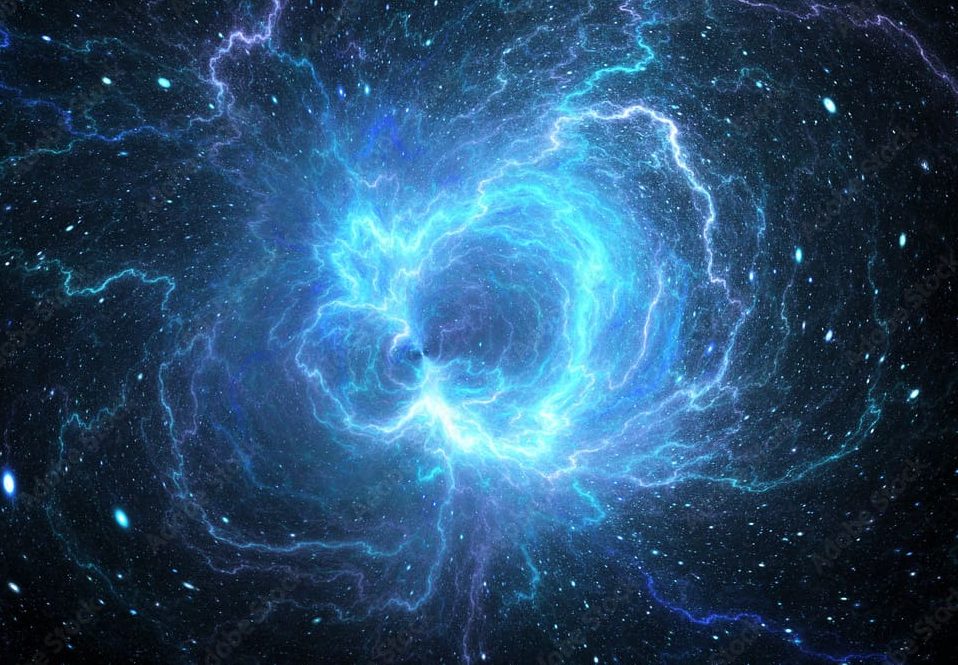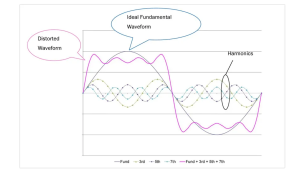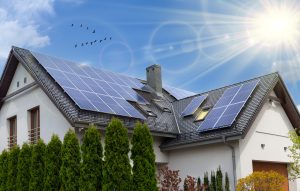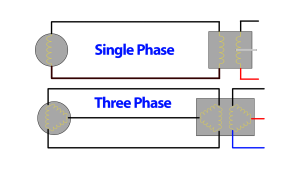Energy represents the capacity to do work or produce change. It is integral to all aspects of the universe, from the smallest quantum particles to the largest galactic structures. Understanding the principles of energy is crucial for grasping the dynamics of physical systems, enabling innovations in technology, and addressing environmental challenges.
Primary and Secondary Energy
When discussing energy systems it is important to make distinctions between primary and secondary energy sources, so we understand raw vs transformed energy. Primary energy encompasses the forms of energy harnessed directly from raw, natural resources. It includes energy as it exists in its natural form before any conversion or transformation. Examples of primary energy sources are coal, crude oil, natural gas, wind, water, and solar radiation. For instance, we burn coal to produce heat, which then generates electricity in a thermal power plant.

Secondary energy, on the other hand, is the form of energy that results from the transformation of primary energy sources. The most common example of secondary energy is electricity. Which must be produced from other energy sources such as coal, nuclear power, or renewable sources like wind or solar. Once available in an electrical system, distributors send it through grids, storing or transferring it to power equipment. Changing forms again at the load.
Forms of Energy
Energy manifests in various forms, each associated with different types of physical systems and transformations. Each from can transform each of these forms into any of the other forms:
- Kinetic Energy: This is the energy of motion. Any object in motion possesses kinetic energy. Which is directly proportional to the mass of the object and the square of its velocity. Kinetic energy is a pivotal concept in everything from vehicular motion to the flow of electrons in electrical conductors.
- Potential Energy: Stored energy due to an object’s position or state. For example, objects positioned at a height relative to a lower level store gravitational potential energy. Elastic potential energy is stored when materials like springs are compressed or stretched. A change in position or state can transform potential energy into kinetic energy.
- Thermal Energy: The internal energy present within a system due to the random motions of its particles. What creates heat is the internal motion of the particles of an atom. Higher temperatures correspond to greater thermal energy, which is critical in understanding heat transfer, phase changes, and chemical reactions.
- Chemical Energy: Stored in the bonds of chemical compounds. Chemical reactions, such as combustion or photosynthesis, release or absorb this form of energy.
- Electrical Energy: Generated by the movement of electrons or other charged particles. It is a key form of energy in modern technology, powering everything from household appliances to industrial machinery.
- Nuclear Energy: Released during nuclear fission or fusion. Nuclear energy powers the sun (through fusion) and can be harnessed on Earth for electricity generation (typically through fission).
- Radiant Energy: The energy carried by electromagnetic waves, such as light and radio waves. This form of energy is crucial for telecommunications, weather systems, and solar power technologies.
Conservation of Energy
Similar to the conservation of matter, the principle of conservation of energy states that one cannot create or destroy energy. It can only be transferred or transformed from one form to another. This fundamental principle, also known as the first law of thermodynamics, ensures that the total energy in an isolated system remains constant over time.
Imagine an electrician is wiring a new house. The electrician installs a 100W light bulb connected to a 120V power source. The light bulb converts electrical energy into both light and heat. Let’s say this bulb has a resistance of 144Ω which allows a current of 0.833A to be drawn through it. Also, if we look at a sliver of time to see the energy consumed in this time, we can isolate a 1 hour block of time, which is 3,600 seconds. Now we can calculate the total energy provided to the load using:
where E is energy, P is power, and t is time. Plugging in our values above we see that:
This means that the bulb will convert 360,000 Joules of electrical energy to 360,000 Joules of heat and light energy combined. Since most bulbs are extremely inefficient, the vast majority, roughly 90%, of that energy will be useless heat dissipating from the bulb. The system usefully converts the remaining 10% of that energy to light energy, illuminating the room.
What this means
Since the circuit is providing 360,000 Joules of electrical energy to the load, and the load is converting 360,000 Joules to another form of energy, this means that no energy transfers back to the utility company generators. All energy transfers out of the circuit. This is why batteries die, and why utility generators need a constant supply of new energy added to the system to keep the generators pumping electrical energy down the line. It’s not that electrical energy is sent by the power company to loads. It’s that loads call for a certain amount of energy and draws the needed energy from the utility source.
One other thing to note, is that even the conductors feeding the bulb are converting thermal energy away from them. Since copper conductors have a certain amount of internal resistance, roughly 2Ω per 1,000 ft, there is even more thermal energy expended over the total length of wire from the utility generator all the way to the light bulb. However, due to the first law of thermodynamics the total in has to equal the total out:
From the perspective of an electrician, understanding this principle is crucial for several reasons:
- Choosing the Right Wire Gauge: To minimize energy loss (in the form of heat) and ensure adequate voltage delivery to the load, electricians must choose an appropriate wire gauge. Thicker conductors have lower resistance. Thus, less voltage drop over long distances, conserving more of the electrical energy for the load.
- Safety: Knowing that energy transforms within the system, primarily into heat, helps in safeguarding against potential hazards like overheating wires which can lead to fires. Proper load calculations and circuit arrangements prevent excessive current that could exceed the wire’s capacity.
- Energy Efficiency: Minimizing voltage drop and heat loss makes the entire electrical system more efficient. Efficient wiring ensures that appliances and fixtures receive the proper voltage for optimal performance. Which in turn conserves energy and reduces utility costs. Since customers pay for total energy consumption, not just the useful portion, it behooves us to install systems and components which deliver the maximum amount of energy, with as little loss as possible. This is the reason there’s been a huge shift in using LED bulbs rather than incandescent and halogen in homes and businesses. Losses are quite literally, burning dollars.
Energy Transfer and Transformation
Energy transfers and transformations are central to the functioning of all physical systems. We can observe these processes in various scenarios. In mechanical systems, energy transforms between kinetic and potential forms. For example, in a swinging pendulum, energy constantly shifts between gravitational potential energy and kinetic energy. In electrical circuits, light bulbs transform electrical energy into light, heaters into heat, and motors into mechanical energy. In thermodynamic cycles, such as those in refrigerators or engines, energy transfers between systems as heat and work, facilitating cooling and power generation.
Most electrical energy production comes from a primary energy source such as burning coal, nuclear energy, water movement, or solar energy transfer. The beautiful thing about energy transfer is that all sources of energy can be utilized to generate or convert to electrical energy. Some are more useful at a large scale for heavy usage, while others are better for more focused, smaller applications.
Efficiency of Energy
Efficiency is a measure of how much useful energy is obtained from a system compared to the energy put into it. It is a critical concept in engineering and environmental science, highlighting how energy transformations are never 100% efficient due to energy losses, typically as waste heat. An example of this is when shopping for light-bulbs, no matter how efficient of a bulb we buy they are never 100% efficient. A lightbulb always wastes heat outward as a result of light escaping.
Some bulbs have a high efficacy, meaning they convert a greater proportion of electrical energy into light, thereby reducing the amount of wasted energy. LED bulbs, for instance, are renowned for their high efficacy. They use significantly less electrical energy and convert more of it into visible light compared to traditional incandescent bulbs or even compact fluorescent lamps (CFLs). This makes LEDs a more energy-efficient choice for both residential and commercial lighting applications.

It’s not just lighting
All energy transformations play a delicate balancing act of providing useful output while at the same time dealing with waste or losses. You can also apply the idea of efficiency to larger systems, such as power plants and industrial machinery. In these cases, we can measure how effectively these systems convert the primary energy (like coal, natural gas, or solar energy) into usable power or work. For example, modern combined cycle gas turbines can achieve energy efficiencies of up to 60%. That means only 60% of this machinery is proving useful power, while 40% is loss. Which is considerably higher than the traditional single-cycle steam turbines. This improvement is largely due to advancements in technology that allow for better heat recovery and use in the system.
Moreover, the efficiency of energy systems is not just limited to the conversion of energy from one form to another but also includes the effectiveness of energy distribution and use. For instance, an electric vehicle’s battery might have a high energy density. But the efficiency of the vehicle will also depend on factors such as aerodynamics, the weight of the vehicle, and the efficiency of the electric motor.
Entropy and the Second Law of Thermodynamics
The second law of thermodynamics introduces the concept of entropy, a measure of the disorder or randomness in a system. It states that in any closed system, the total entropy can never decrease over time. Meaning things tend toward a state of more randomness, rather than less randomness. This law explains why energy transformations are not perfectly efficient and why certain processes are irreversible.
Consider an electrician dealing with the maintenance of older electrical systems, whether it’s residential wiring, circuit breakers, or industrial machinery. Over time, these electrical components tend to degrade: conductors may corrode, insulation can break down, and connections might loosen. According to the Second Law of Thermodynamics, these changes are manifestations of increasing entropy within the electrical system. Essentially, the system becomes more disordered rather than more harmonious.
Entropy in this context can be seen in the increased resistance that these aged or degraded components present. For instance, a corroded wire or a loose connection increases the electrical resistance in the circuit. This higher resistance leads to greater heat production as electricity flows through these components.
Energy and Power
Many people mistake the terms “energy” and “power,” often using the terms interchangeably. While energy measures the capacity to do work, power measures the rate at which work is done or energy is transferred. Expressed in watts (joules per second), power is a concept which assesses how quickly energy transformations occur in various systems, from electrical appliances to industrial machinery.
For example, when an electrician checks a building’s energy consumption, they might refer to the total amount of energy used over a period, such as a month, which utility bills report in kilowatt-hours. This figure represents the cumulative electrical energy consumed by all devices and systems in the building.
Power, on the other hand, tells us how fast energy is being consumed or converted from one form to another. In the electrical world, we measure power in watts (W), with one watt equating to one joule per second. For example, a lightbulb rated at 100 watts converts 100 joules of electrical energy into light and heat energy every second it remains on.
Renewable and Non-Renewable Energy Sources
Understanding the distinction between renewable and non-renewable energy sources is crucial for sustainable development. Some sources of energy take resources from the world and cannot be renewed or replaced. As such, they may deplete over time, causing an issue with supplying the increasing demand for energy consumption. Other energy sources are “renewable,” and are in constant supply like the sun. There is a large push to move to more renewable sources of energy lately, which is great for consumers – but not so great for energy companies who rely on ownership of resource pools to control access to these resources.
- Renewable Energy Sources: These sources regenerate naturally, and we consider them sustainable. Examples include solar, wind, hydro, and geothermal energy. Harnessing these sources effectively is key to reducing dependence on fossil fuels and mitigating a future energy crisis.
- Non-Renewable Energy Sources: These include fossil fuels such as coal, oil, and natural gas, which are finite and release carbon dioxide when burned. Nuclear energy, while not emitting CO2, produces radioactive waste that must be carefully managed.

Conclusion
The principles of energy provide a comprehensive framework for understanding and manipulating the physical world. By mastering how energy is stored, transferred, and transformed, we gain insights into the workings of the universe from microscopic reactions to global systems. This knowledge is pivotal for advancing technology, optimizing energy use, and addressing the challenges of sustainability and environmental stewardship. Keep exploring with the “Principles of Matter” article!






